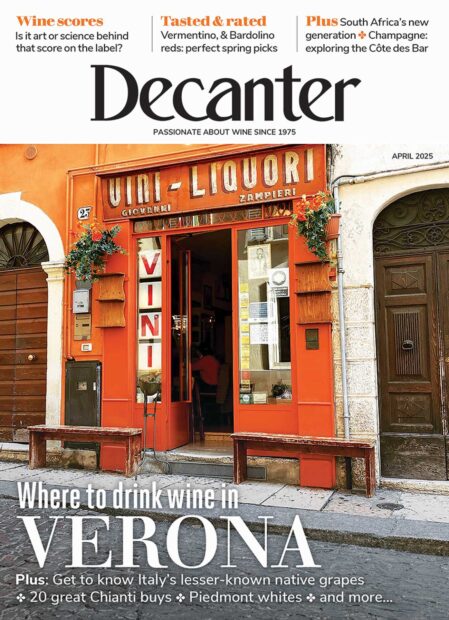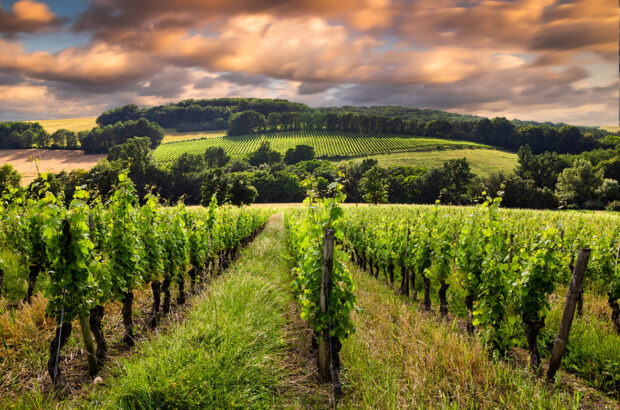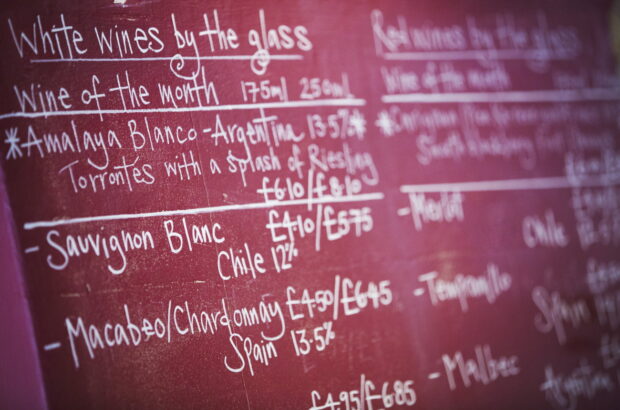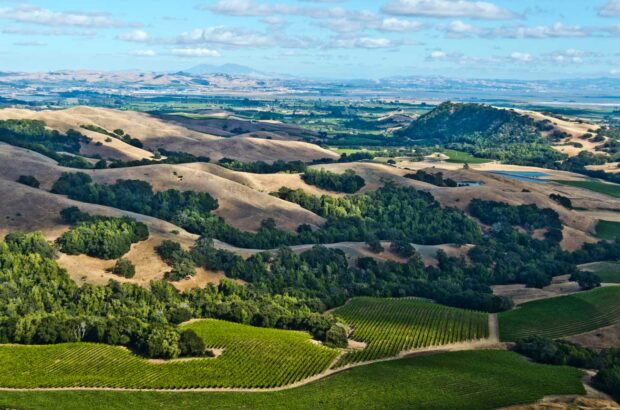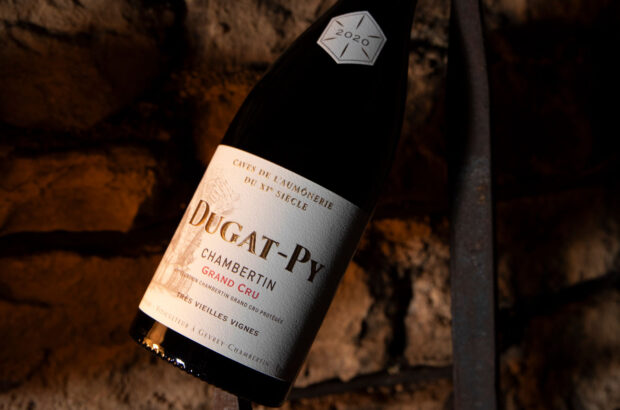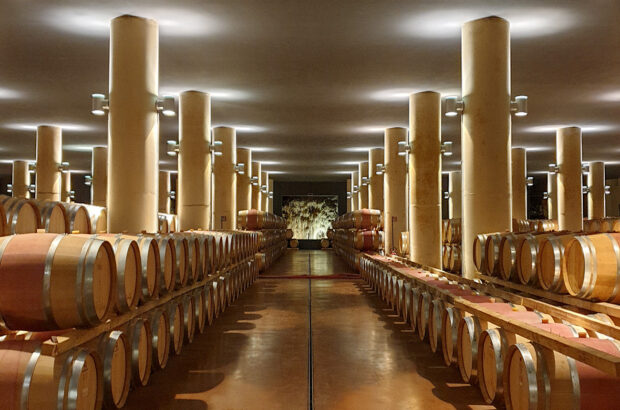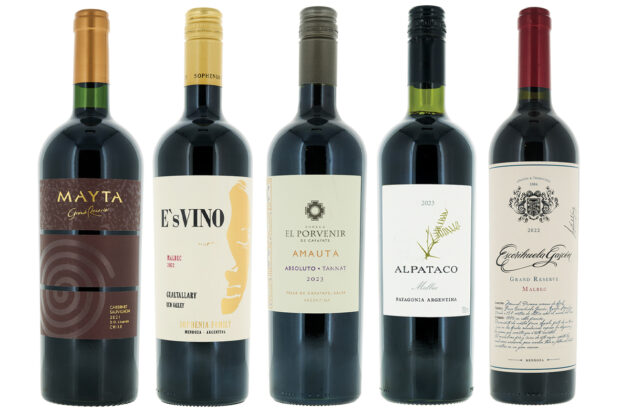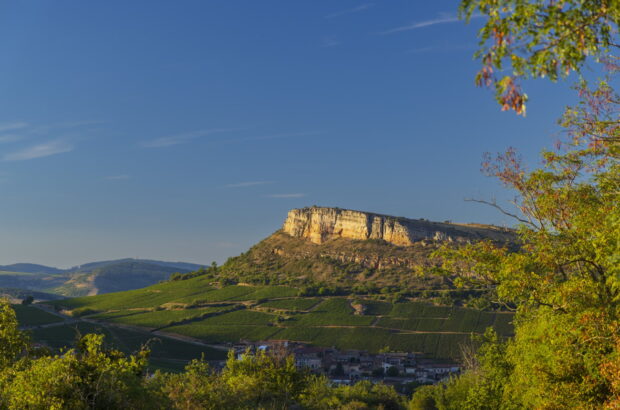The site must have looked propitious: the soil was rich and red, the vegetation lush, dense and green. Christopher Columbus founded the colony of La Isabela in what is now the Dominican Republic in 1493 as a base from which to search for precious metals – especially gold – but the second European settlement in Latin America was almost certainly the site of its first vineyard, planted alongside other crops.
{"content":"PHA+RGlkIHRob3NlIGZpcnN0IHZpbmVzIHByb2R1Y2UgZ3JhcGVzPyBJdCB3b3VsZCBoYXZlIGJlZW4gYSBjbG9zZSBjYWxsLCBhcyBMYSBJc2FiZWxhIHdhcyBhYmFuZG9uZWQgYWZ0ZXIgdGhyZWUgeWVhcnMgYmVjYXVzZSBvZiBkaXNlYXNlLCBodXJyaWNhbmVzIGFuZCBodW5nZXIuIEFuZCBpZiBzbywgd2hhdCB3ZXJlIHRoZXk\/IExpc3RhzIFuIFByaWV0byAoYWthIFBhacyBcywgQ3Jpb2xsYSBDaGljYSBhbmQgTWlzc2lvbikgYnJvdWdodCBmcm9tIENhc3RpbGxhLUxhIE1hbmNoYSBhbmQgc2V0IHRvIGJlY29tZSB0aGUgbW9zdCBwbGFudGVkIGdyYXBlIGluIHRoZSBBbWVyaWNhcyBieSB0aGUgbWlkZGxlIG9mIHRoZSAxNnRoIGNlbnR1cnk\/IE1vc2NhdGVsIGRlIEFsZWphbmRyacyBYT8gT3Igc29tZSBvdGhlciBncmFwZSwgc291cmNlZCBwZXJoYXBzIGZyb20gTGEgR29tZXJhIGluIHRoZSBDYW5hcnkgSXNsYW5kcywgQ29sdW1idXPigJkgbGFzdCBwb3J0IG9mIGNhbGwgdG8gdGFrZSBvbiBwcm92aXNpb25zIGJlZm9yZSBjcm9zc2luZyB0aGUgQXRsYW50aWM\/IEluIHRoZSBhYnNlbmNlIG9mIGFyY2hhZW9sb2dpY2FsIGZpbmRzLCB3ZSBkb27igJl0IGtub3cuV2hhdCB3ZSBkbyBrbm93IGlzIHRoYXQgd2luZSBtb3ZlZCBzb3V0aCB3aXRoIHNldHRsZW1lbnQgYW5kIGNvbnF1ZXN0LiBFdmVyeXdoZXJlIHRoZXkgd2VudCwgdGhlIGNvbnF1aXN0YWRvcnMgcGxhbnRlZCB2aW5lcywgaW4gTWV4aWNvLCBWZW5lenVlbGEsIFBlcnUsIEJvbGl2aWEsIENoaWxlIGFuZCBmaW5hbGx5IEFyZ2VudGluYSwgcGFydGx5IGZvciByZWxpZ2lvdXMgcHVycG9zZXMsIGJ1dCBtb3JlIG9mdGVuIGZvciBzZWN1bGFyIG9uZXM6IG1lZGljaW5lLCBmb29kIGFuZCBwbGVhc3VyZS4gQXMgZWFybHkgYXMgMTUxOSwgdGhlIG1lcmNoYW50IHZpbnRuZXJzIG9mIFNldmlsbGUgbWFkZSBzdXJlIHRoYXQgZXZlcnkgc2hpcCBsZWF2aW5nIGZvciB0aGUgQW1lcmljYXMgY2FycmllZCBjdXR0aW5ncyBvciBzZWVkcyBhcyBwYXJ0IG9mIHRoZWlyIGRpdmVyc2UgY2FyZ28uIEJ5IHRoZSBtaWQtMTZ0aCBjZW50dXJ5LCBQZXJ1IHdhcyB0aGUgY2VudHJlIG9mIHRoZSBMYXRpbiBBbWVyaWNhbiB3aW5lIHRyYWRlOyB3aXRoaW4gMjUgeWVhcnMgb2YgcGxhbnRpbmcgaXRzIGZpcnN0IHZpbmV5YXJkIChpbiAxNTM5KSwgdGhlIGNvdW50cnkgaGFkIDQwLDAwMGhhLiBUaGUgUG9ydHVndWVzZSB0b28gYnJvdWdodCB2aW5lcyBmcm9tIEV1cm9wZSDigJMgcHJvYmFibHkgTWFkZWlyYSDigJMgdG8gQnJhemlsIGluIDE1MzIuIE9ubHkgVXJ1Z3VheSB3YXMgbGF0ZSB0byB0aGUgdmlub3VzIHBhcnR5LCB3YWl0aW5nIHVudGlsIHRoZSBhcnJpdmFsIG9mIEplc3VpdCBtaXNzaW9uYXJpZXMgd2l0aCB0aGVpciB2aW5lcyBpbiB0aGUgMTYyMHMuPC9wPgo8cD48ZGl2IGNsYXNzPSJhZC1jb250YWluZXIgYWQtY29udGFpbmVyLS1tb2JpbGUiPjxkaXYgaWQ9InBvc3QtaW5saW5lLTEiIGNsYXNzPSJpcGMtYWR2ZXJ0Ij48L2Rpdj48L2Rpdj48L3A+Cjxocj4KPGgzIHN0eWxlPSJ0ZXh0LWFsaWduOiBjZW50ZXIiPlNjcm9sbCBkb3duIGZvciBBdGtpbiYjODIxNztzIHRvcCB3aW5lcyBmcm9tIG9sZCB2aW5lczwvaDM+Cjxocj4KPGgzPlBsYW50aW5nIHJlc3RyaWN0aW9uczwvaDM+CjxwPkxhdGluIEFtZXJpY2EgZGlkIGhhdmUgc29tZSB3aWxkIHZpbmVzIG9mIGl0cyBvd24g4oCTIHRoZSBhbnRlY2VkZW50cyBvZiB0aGUgdGVuZHJpbHMgdGhhdCB5b3UgY2FuIHNlZSBzbmFraW5nIHRocm91Z2ggdGhlIHRyZWVzIGluIENoaWxl4oCZcyBNYXVsZSBWYWxsZXkg4oCTIGJ1dCBubyB3aW5lIHdhcyBwcm9kdWNlZCB1bnRpbCB0aGUgU3BhbmlhcmRzIGFycml2ZWQuIFRoZSBpbmRpZ2Vub3VzIHBvcHVsYXRpb25zIGRyYW5rIGFsY29ob2xpYyBiZXZlcmFnZXMgZmVybWVudGVkIGZyb20gZnJ1aXQsIGNlcmVhbHMgYW5kIGFnYXZlIHJhdGhlciB0aGFuIGdyYXBlcy4gVGhlIGFycml2YWwgb2YgVml0aXMgdmluaWZlcmEgd2FzIHdoYXQgYnVpbHQgdGhlIHdpbmUgaW5kdXN0cnksIHR1cm5pbmcgaXQgaW50byBhIGNvbnNwaWN1b3VzIHN1Y2Nlc3MuIFNvIGNvbnNwaWN1b3VzLCBhcyBpdCBoYXBwZW5lZCwgdGhhdCBpbiAxNTk1IFBoaWxpcCBJSSBvZiBTcGFpbiBpc3N1ZWQgYW4gZWRpY3QgcmVzdHJpY3RpbmcgZnVydGhlciBwbGFudGluZ3MgaW4gU3BhaW7igJlzIGNvbG9uaWVzLjwvcD4KPHA+U2lnbmlmaWNhbnRseSwgbW9uYXN0ZXJpZXMgd2VyZSBleGVtcHRlZCBmcm9tIHRoZSBpbmp1bmN0aW9uLiBKZXN1aXQgbWlzc2lvbmFyaWVzIGluIHBhcnRpY3VsYXIgd2VyZSBhIHZpdGFsIHBhcnQgb2YgdGhlIGRldmVsb3BtZW50IG9mIHRoZSBuYXNjZW50IExhdGluIEFtZXJpY2FuIHdpbmUgc2NlbmUuIEFzIGhpc3RvcmlhbiBSb2QgUGhpbGxpcHMgaGFzIHdyaXR0ZW46IOKAmFRoZSBza2lsbCB3aXRoIHdoaWNoIHRoZSBtaXNzaW9uYXJpZXMgYW5kIG90aGVycyBpZGVudGlmaWVkIHN1aXRhYmxlIGFyZWFzIGZvciB2aXRpY3VsdHVyZSBpcyBzaG93biBieSB0aGUgZmFjdCB0aGF0IG1vc3Qgb2YgdGhvc2UgcGxhbnRlZCBpbiB0aGUgMTZ0aCBjZW50dXJ5IHJlbWFpbiBjZW50cmVzIG9mIHdpbmUgcHJvZHVjdGlvbiB0b2RheS7igJk8L3A+CjxwPlBoaWxsaXBzIGlzIHJpZ2h0LiBQZXJ1IG1heSBiZSBiZXR0ZXIga25vd24gZm9yIHBpc2NvIHRoYW4gdGFibGUgd2luZSB0aGVzZSBkYXlzLCBoYXZpbmcgc3VmZmVyZWQgZnJvbSBwaHlsbG94ZXJhIGFuZCB0aGUgc2hpZnQgdG8gb3RoZXIgY3JvcHMgKG1vc3Qgbm90YWJseSBjb3R0b24gaW4gdGhlIDE5dGggY2VudHVyeSksIGJ1dCB3aGF0IGFyZSBub3cgQ2hpbGUgYW5kIEFyZ2VudGluYSwgd2hlcmUgdmluZXMgYXJyaXZlZCBpbiAxNTQ4IGFuZCAxNTUxIHJlc3BlY3RpdmVseSwgYXJlIHN0aWxsIGZsb3VyaXNoaW5nLiBBbmQgd2hpbGUgaXTigJlzIHRydWUgdGhhdCBzb21lIG9mIHRoZSBiZXN0IHJlZ2lvbnMgaW4gdGhlc2UgdHdvIGNvdW50cmllcyBhcmUgY29tcGFyYXRpdmVseSBuZXcg4oCTIEFsY29odWF6LCBIdWFzY28gYW5kIE9zb3JubyBpbiBDaGlsZSwgYW5kIExhIENhcnJlcmEsIEd1YWx0YWxsYXJ5IGFuZCBVc3BhbGxhdGEgaW4gQXJnZW50aW5hIOKAkyBwbGVudHkgb2YgaGlzdG9yaWMgcmVnaW9ucyBhcmUgc3RpbGwgcHJvZHVjaW5nIGV4Y2VsbGVudCB3aW5lcywgZnJvbSBJdGF0YSB0byB0aGUgTWF1bGUgVmFsbGV5LCBhbmQgU2FsdGEgdG8gTHVqYcyBbiBkZSBDdXlvLjwvcD4KPHA+PGRpdiBjbGFzcz0iYWQtY29udGFpbmVyIGFkLWNvbnRhaW5lci0tbW9iaWxlIj48ZGl2IGlkPSJwb3N0LWlubGluZS0yIiBjbGFzcz0iaXBjLWFkdmVydCI+PC9kaXY+PC9kaXY+PC9wPgo8aDM+TWlzc2luZyBhIHRyaWNrPC9oMz4KPHA+V2hlcmUgYXJlIExhdGluIEFtZXJpY2HigJlzIG9sZGVzdCB2aW5lcz8gVGhlcmUgaXMgbm8gZXF1aXZhbGVudCBvZiBTb3V0aCBBZnJpY2HigJlzIE9sZCBWaW5lIFByb2plY3QgaW4gYW55IG9mIGl0cyB3aW5lLXByb2R1Y2luZyBjb3VudHJpZXMsIHVuZm9ydHVuYXRlbHksIHNvIGl04oCZcyBkaWZmaWN1bHQgdG8gc2F5IHdpdGggYW55IGNlcnRhaW50eS4gT2xkIHZpbmVzIGFyZSBub3QgdHJlYXN1cmVkIChvciBldmVuIG1lbnRpb25lZCBpbiBtb3N0IGNhc2VzKSB0aGUgd2F5IHRoZXkgYXJlIGluIEV1cm9wZSwgQXVzdHJhbGlhIGFuZCB0aGUgQ2FwZSB0aGVzZSBkYXlzLiBHaXZlbiB0aGUgaW50ZXJlc3QgaW4gb2xkLXZpbmUgZnJ1aXQgYW5kIHRoZSBjb25jZW50cmF0aW9uIGFuZCBxdWFsaXR5IGl0IGNhbiBwcm92aWRlLCB0aGUgY29udGluZW50IGlzIHN1cmVseSBtaXNzaW5nIGEgdHJpY2suPC9wPgo8cD5DZWVzIHZhbiBDYXN0ZXJlbiBNVywgYW4gZXhwZXJ0IG9uIEJvbGl2aWFuIHdpbmUsIHJlY2tvbnMgdGhlIGxhdGUgRG9uIEFybWFuZG8gR29uemHMgWxleuKAmXMgdmluZXlhcmQgaW4gQ2ludGksIGNsb3NlIHRvIFRhcmlqYSwgbXVzdCBiZSBpbiB3aXRoIGEgc2hvdXQuIOKAmFdoZW4gSSBzcG9rZSB0byBEb24gQXJtYW5kbyBpbiAyMDE1LCBoZSB0b2xkIG1lIHRoYXQgc29tZSBvZiBoaXMgdmluZXMgaGFkIGJlZW4gcGxhbnRlZCBieSBoaXMgZ3JlYXQtIGdyYW5kZmF0aGVyLiBIZSB3YXMgODAgYXQgdGhlIHRpbWUsIHNvIEkgcmVja29uIHRoZXkgY291bGQgYmUgY2xvc2UgdG8gMjAwIHllYXJzIG9sZC7igJk8L3A+CjxwPkZpcnN0IHBsYW50ZWQgaW4gdGhlIDE2dGggY2VudHVyeSwgdGhlIGFyZWEgdXNlcyB0cmVsbGlzZXMgdG8gY29tYmF0IHRoZSBodW1pZGl0eSBhbmQgZGlzZWFzZSBwcmVzc3VyZSB0aGF0IGNvbWVzIHdpdGggZ3Jvd2luZyBncmFwZXMgaW4gYSB0cm9waWNhbCBjbGltYXRlLCBvZnRlbiBhdHRhY2hpbmcgdmluZXMgdG8gcGVwcGVyIChtb2xsZSkgYW5kIGNoYW7Mg2FyIHRyZWVzLCBhbmQgdGhlbiBwcnVuaW5nIGFuZCBwaWNraW5nIHRoZW0gZnJvbSBsYWRkZXJzLiBUaGUgdmFyaWV0aWVzIGFyZSBhbGwgU3BhbmlzaCDigJMgQ3Jpb2xsYSBDaGljYSwgTW9zY2F0ZWwgZGUgQWxlamFuZHJpzIFhLCBWaWNob3F1ZW7Mg2EgYW5kIENhcmluzINlbmEgKDxhIGhyZWY9Imh0dHBzOi8vd3d3LmRlY2FudGVyLmNvbS93aW5lL2dyYXBlLXZhcmlldGllcy9jYXJpZ25hbi8iIHRhcmdldD0iX2JsYW5rIiByZWw9Im5vb3BlbmVyIj5DYXJpZ25hbjwvYT4pIOKAkyBhbmQgdGhlIHZpbmV5YXJkcyBhcmUgaGlzdG9yaWMgaW4gbW9yZSBzZW5zZXMgdGhhbiBvbmUuIOKAmFRoZXnigJl2ZSBiYXJlbHkgY2hhbmdlZCBzaW5jZSB0aGUgU3BhbmlhcmRzIGZpcnN0IHBsYW50ZWQgdGhlbSzigJkgZXhwbGFpbnMgdmFuIENhc3RlcmVuLjwvcD4KPGRpdiBjbGFzcz0iYWQtY29udGFpbmVyIGFkLWNvbnRhaW5lci0tbW9iaWxlIj48ZGl2IGlkPSJwb3N0LWlubGluZS0zIiBjbGFzcz0iaXBjLWFkdmVydCI+PC9kaXY+PC9kaXY+CjxoMz5DaGlsZWFuIHJldml2YWw8L2gzPgo8cD5VcnVndWF5IChCb2RlZ2FzIENhcnJhdeKAmXMgODkteWVhci1vbGQgPGEgaHJlZj0iaHR0cHM6Ly93d3cuZGVjYW50ZXIuY29tL3dpbmUvZ3JhcGUtdmFyaWV0aWVzL25lYmJpb2xvLyIgdGFyZ2V0PSJfYmxhbmsiIHJlbD0ibm9vcGVuZXIiPk5lYmJpb2xvPC9hPiBhbmQgU291c2FvIGJsb2NrKSBhbmQgQnJhemlsICh0aGUgTWlvbG8gV2luZSBHcm91cOKAmXMgMTk3NiBwbGFudGluZ3Mgb2YgVGFubmF0IGFuZCBSaWVzbGluZykgY2Fu4oCZdCBjb21wZXRlIHdpdGggQm9saXZpYSBmb3IgYW50aXF1aXR5LCBidXQgQ2hpbGUgY2VydGFpbmx5IGNhbi4gVGhlIG9sZGVzdCBkYXRlZCB2aW5lcyBJ4oCZdmUgc2VlbiBhcmUgaW4gSXRhdGEsIGNsb3NlIHRvIENvbmNlcGNpb8yBbiBhdCBDdWNoYSBDdWNoYSBpbiBSYcyBbnF1aWwsIHdoZXJlIHRoZSBlc3RhdGXigJlzIDEuNjNoYSA5QyBibG9jayBpcyBwcm91ZGx5IGlkZW50aWZpZWQgYXMgaGF2aW5nIGJlZW4gcGxhbnRlZCBpbiAxODUwLiBUaGlzIG1pZ2h0IG5vdCBiZSB0aGUgbW9zdCB2ZW5lcmFibGUgYmxvY2sgaW4gdGhlIHJlZ2lvbiwgaG93ZXZlci4gT25lIGdyb3dlciB0b2xkIG1lIHRoYXQgcGh5bGxveGVyYS1mcmVlIEl0YXRhIGhhcyBzb21lIHZpbmVzIHRoYXQgYXJlIG92ZXIgMjUwIHllYXJzIG9sZCwgd2hpY2ggbWF5IHdlbGwgYmUgdHJ1ZSwgZ2l2ZW4gdGhlIHNpemUgb2Ygc29tZSBvZiB0aGUgdHJ1bmtzLjwvcD4KPHA+UGFydGx5IHRoYW5rcyB0byB0aGUgcmVuYWlzc2FuY2Ugb2YgSXRhdGEgYW5kIG5laWdoYm91cmluZyBCacyBbyBCacyBbywgbGVkIGJ5IHBlb3BsZSBzdWNoIGFzIExlb25hcmRvIEVyYXpvLCBSb2JlcnRvIEhlbnJpzIFxdWV6LCBNYXVyaWNpbyBHb256YcyBbGV6IG9mIFZpdGl2aW5pzIFjb2xhIEVzdGFjaW\/MgW4gWXVtYmVsIGFuZCBNYXJjZWxvIFJldGFtYWwgb2YgRGUgTWFydGlubyAoYWxtb3N0IGFsbCBvZiB3aG9tIHdvcmsgd2l0aCBkcnktZmFybWVkIGdyYXBlcyksIG9sZC12aW5lIFBhacyBcyBpbiBwYXJ0aWN1bGFyIGlzIGVuam95aW5nIGEgcmV2aXZhbC4gRnVydGhlciBub3J0aCBpbiBNYXVsZSwgcHJvZHVjZXJzIGxpa2UgUmVuYcyBbiBDYW5jaW5vIG9mIEh1YXNvIGRlIFNhdXphbCwgSnVsaW8gQm91Y2hvbiBhbmQgRGllZ28gTW9yYWxlcyBhcmUgcHJvbW90aW5nIHRoZSB2YXJpZXR5IHRvby4gVGhlcmXigJlzIGV2ZW4gYW4gYW5udWFsIEZpZXN0YSBkZWwgVmlubyBQYWnMgXMgaW4gQ2F1cXVlbmVzIGV2ZXJ5IE5vdmVtYmVyLjwvcD4KPGRpdiBjbGFzcz0iYWQtY29udGFpbmVyIGFkLWNvbnRhaW5lci0tbW9iaWxlIj48ZGl2IGlkPSJwb3N0LWlubGluZS00IiBjbGFzcz0iaXBjLWFkdmVydCI+PC9kaXY+PC9kaXY+CjxwPlRoZSBzby1jYWxsZWQgVXZhIENoaWxlbmEgaXNu4oCZdCB0aGUgb25seSBvbGQtdmluZSBmb2N1cyBpbiBDaGlsZS4gTW9zY2F0ZWwgZGUgQWxlamFuZHJpzIFhICh3aGljaCBpcyBzb21ldGltZXMgYmxlbmRlZCB3aXRoIG90aGVyIGdyYXBlcyBzdWNoIGFzIENvcmludG8pLCA8YSBocmVmPSJodHRwczovL3d3dy5kZWNhbnRlci5jb20vd2luZS9ncmFwZS12YXJpZXRpZXMvc2VtaWxsb24tZ3JhcGUtdmFyaWV0aWVzLyIgdGFyZ2V0PSJfYmxhbmsiIHJlbD0ibm9vcGVuZXIiPlNlbWlsbG9uPC9hPiwgPGEgaHJlZj0iaHR0cHM6Ly93d3cuZGVjYW50ZXIuY29tL3dpbmUvZ3JhcGUtdmFyaWV0aWVzL2NpbnNhdWx0LyIgdGFyZ2V0PSJfYmxhbmsiIHJlbD0ibm9vcGVuZXIiPkNpbnNhdWx0PC9hPiBhbmQgQ2FyaWduYW4gYXJlIGFsbCBwcm9kdWNpbmcgc29tZSBleGNlbGxlbnQgd2luZXMuIFRoZSBsYXN0IG9mIHRoaXMgcXVhcnRldCB3YXNu4oCZdCB3aWRlbHkgcGxhbnRlZCB1bnRpbCBhZnRlciB0aGUgZGlzYXN0cm91cyAxOTM5IGVhcnRocXVha2UsIHdoZW4gaXQgd2FzIHByb21vdGVkIGJ5IHRoZSBnb3Zlcm5tZW50IGFzIGEgc3VwZXJpb3ItcXVhbGl0eSB2YXJpZXR5IHRoYXQgd291bGQgYWlkIE1hdWxl4oCZcyBlY29ub21pYyByZWNvdmVyeS4gQnV0IGl04oCZcyBub3cgcmVjb2duaXNlZCBhcyBvbmUgb2YgQ2hpbGXigJlzIGJlc3QgcmVkIGdyYXBlcywgbW9zdGx5IHRoYW5rcyB0byB0aGUgd29yayBvZiB0aGUgVmlnbmFkb3JlcyBkZSBDYXJpZ25hbiAoVklHTk8pIGdyb3VwLiBFaWdodHkteWVhci1vbGQgdmluZXMgZG9u4oCZdCBjb21wYXJlIHdpdGggc29tZXRoaW5nIHBsYW50ZWQgaW4gMTg1MCBvciBlYXJsaWVyLCBhbmQgeWV0IHRoZXkgYXJlIHN0aWxsIG1hdHVyZSBieSBnbG9iYWwgc3RhbmRhcmRzLjwvcD4KPGgzPlNwYW5pc2ggaGVyaXRhZ2U8L2gzPgo8cD5BbmQgd2hhdCBhYm91dCBBcmdlbnRpbmE\/IFdlbGwsIHRoZSBTYWx0YSByZWdpb24gYXBwZWFycyB0byBiZSBsZWFkaW5nIHRoZSBmaWVsZCBoZXJlLiBEb21pbmdvIEhlcm1hbm9z4oCZIFJ1cGVzdHJlIHZpbmV5YXJkIGluIENhZmF5YXRlIGhhcyBwYXJjZWxzIHRoYXQgZGF0ZSBiYWNrIHRvIHRoZSBsYXRlIDE5dGggY2VudHVyeSwgYnV0IHRoZSB3aW5uZXIgaXMgc3VyZWx5IENvbG9tZcyB4oCZcyAxODU0IGJsb2NrIGluIE1vbGlub3MuIFRoaXMgcmVtYXJrYWJsZSBlc3RhdGUsIHdoaWNoIGlzIGxvY2F0ZWQgYXQgMiwzMDBtIGFsdGl0dWRlIGluIHRoZSB3aWxkcyBvZiBub3J0aGVybiBBcmdlbnRpbmEsIGhhcyBhIHRvdGFsIG9mIDhoYSBvZiB2aW5lcyB0aGF0IGFyZSBiZXR3ZWVuIDEwMCBhbmQgMTUwIHllYXJzIG9sZCwgd2hpY2ggbXVzdCBiZSB0aGUgaGlnaGVzdCBudW1iZXIgaW4gdGhlIGNvdW50cnkuPC9wPgo8ZGl2IGNsYXNzPSJhZC1jb250YWluZXIgYWQtY29udGFpbmVyLS1tb2JpbGUiPjxkaXYgaWQ9InBvc3QtaW5saW5lLTUiIGNsYXNzPSJpcGMtYWR2ZXJ0Ij48L2Rpdj48L2Rpdj4KPHA+T2xkLXZpbmUgTWFsYmVjIHBsYW50aW5ncyBleGlzdCBpbiBvdGhlciBwYXJ0cyBvZiBBcmdlbnRpbmEgdG9vLCBtb3N0IG5vdGFibHkgaW4gUmnMgW8gTmVncm8gKHdoZXJlIE5vZW1pzIFh4oCZcyAxOTMyIHBsYW50aW5ncyBhcmUgbG9jYXRlZCksIGluIEx1amHMgW4gZGUgQ3V5byBjbG9zZSB0byB0aGUgY2l0eSBvZiBNZW5kb3phIChEZSBBbmdlbGVz4oCZIDE5MjQgdmluZXlhcmQgaXMgdGhlIG1vc3QgZmFtb3VzKSBhbmQgaW4gTGEgQ29uc3VsdGEsIGF0IHRoZSBzb3V0aGVybiBlbmQgb2YgdGhlIFVjbyBWYWxsZXksIHdoZXJlIEl0YWxpYW4gaW1taWdyYW50cyBwbGFudGVkIHRoaXMgYW5kIG90aGVyIGdyYXBlcyBhdCB0aGUgZW5kIG9mIHRoZSAxOXRoIGNlbnR1cnkuIFZlcnkgZmV3IG9mIHRob3NlIHBsb3RzIHN0aWxsIGV4aXN0LCBhbGFzLiBBIGdvdmVybm1lbnQgdmluZS1wdWxsIHNjaGVtZSBpbnRyb2R1Y2VkIGF0IHRoZSBlbmQgb2YgdGhlIDE5ODBzIHNhdyBhIGRyYW1hdGljIHJlZHVjdGlvbiBvZiBNYWxiZWMgcGxhbnRpbmdzIGZyb20gYSBwZWFrIG9mIDU4LDAwMGhhLCB3aXRoIG1hbnkgdmluZXlhcmRzIGJ1bGxkb3plZCB0byBtYWtlIHdheSBmb3IgbW9yZSBwcm9kdWN0aXZlIGdyYXBlcyBvciBvdGhlciBjcm9wcy4gRXZlbiB0b2RheSwgYWZ0ZXIgdGhlIFVjbyBWYWxsZXkgYm9vbSBvZiB0aGUgcGFzdCAyMCB5ZWFycywgQXJnZW50aW5hIGlzIG9ubHkgYmFjayBhdCA0MywwMDBoYS48L3A+CjxwPkxpa2UgQ2hpbGUsIEFyZ2VudGluYSBpcyBhbHNvIHJlZGlzY292ZXJpbmcgaXRzIFNwYW5pc2ggaGVyaXRhZ2Ugd2l0aCBDcmlvbGxhIENoaWNhLCBub3QgdG8gYmUgY29uZnVzZWQgd2l0aCB0aGUgbW9yZSB3aWRlbHkgcGxhbnRlZCBhbmQgbXVjaCBsZXNzZXIgcXVhbGl0eSBDcmlvbGxhIEdyYW5kZSwgd2hpY2ggaXMgYSBjcm9zc2luZyBvZiBMaXN0YcyBbiBQcmlldG8gYW5kIE1vc2NhdGVsIGRlIEFsZWphbmRyacyBYS4gR29vZCBleGFtcGxlcyBhcmUgbWFkZSBieSBDYWR1cywgQ2FyYSBTdXIsIER1cmlndXR0aSwgRWwgRXN0ZWNvLCBOaXZlbiBhbmQgVmFsbGlzdG8uIE9mIHRoZXNlLCB0aGUgbW9zdCByZW1hcmthYmxlIHNpdGUgaXMgQ2FyYSBTdXLigJlzIDVoYSBvZiB2aW5lcyBpbiBDYWxpbmdhc3RhLCBhIG1peGVkIDgwLXllYXItb2xkIHBlcmdvbGEgb2YgQm9uYXJkYSwgQmFyYmVyYSwgQ3Jpb2xsYSBDaGljYSwgZml2ZSBkaWZmZXJlbnQgQ2VyZXphIGNsb25lcywgPGEgaHJlZj0iaHR0cHM6Ly93d3cuZGVjYW50ZXIuY29tL3dpbmUvZ3JhcGUtdmFyaWV0aWVzL3RvcnJvbnRlcy1ncmFwZS12YXJpZXRpZXMvIiB0YXJnZXQ9Il9ibGFuayIgcmVsPSJub29wZW5lciI+VG9ycm9udGXMgXM8L2E+IFNhbmp1YW5pbm8gYW5kIHRocmVlIGRpZmZlcmVudCBNb3NjYXRlbHMuIOKAmEl04oCZcyBhIG11c2V1bSwgYSBtYXJ2ZWws4oCZIHNheXMgd2luZW1ha2VyIFBhbmNobyBCdXJnYWxsbywgd2hvIHJ1bnMgdGhlIHByb2plY3Qgd2l0aCBTZWJhc3RpYcyBbiBadWNjYXJkaS48L3A+CjxoMz5BIHNlbnNlIG9mIHBsYWNlPC9oMz4KPHA+QnVyZ2FsbG8sIGxpa2UgbWFueSBwZW9wbGUgd2hvIHdvcmsgd2l0aCBvbGQgdmluZXMgaW4gTGF0aW4gQW1lcmljYSwgbGlzdHMgZnJ1aXQgcXVhbGl0eSwgY29uc2lzdGVuY3kgZnJvbSBvbmUgeWVhciB0byB0aGUgbmV4dCBhbmQgdGhlIG5hdHVyYWwgYmFsYW5jZSBvZiB0aGUgcGxhbnRzIGFzIHRoZSBhZHZhbnRhZ2VzIG9mIHdvcmtpbmcgd2l0aCBzdWNoIHNwZWNpYWwgcGFyY2Vscy4gT3RoZXIgcHJvZHVjZXJzIEkgc3Bva2UgdG8gbWVudGlvbmVkIGRlZXBlciByb290IHN5c3RlbXMsIGxvd2VyIHlpZWxkcywgaGlnaGVyIGxldmVscyBvZiBuYXR1cmFsIGFjaWRpdHksIGxpZ25pZmllZCBzdGVtcywgZmluZXIgdGFubmlucyBhbmQgdGhlIGFiaWxpdHkgdG8gY29wZSB3aXRoIGRyb3VnaHQgYmV0dGVyIHRoYW4geW91bmdlciB2aW5leWFyZHMsIHJlZHVjaW5nIG9yIHJlbW92aW5nIHRoZSBuZWVkIGZvciBpcnJpZ2F0aW9uLiDigJhUaGV5IGFkYXB0IHRvIHRoZSB2aW50YWdlIGNvbmRpdGlvbnMs4oCZIHNheXMgRGVyZWsgTW9zc21hbiBLbmFwcCBvZiBHYXJhZ2UgV2luZSBDby4gQWJvdmUgYWxsLCB0aGV5IHNwb2tlIG9mIGEgc2Vuc2Ugb2YgcGxhY2UsIG9mIHZpbmVzIHRoYXQgZXhwcmVzcyB0aGVpciBlbnZpcm9ubWVudC48L3A+CjxkaXYgY2xhc3M9ImluamVjdGlvbiI+PC9kaXY+CjxwPkFuZCB0aGUgZGlzYWR2YW50YWdlcz8gVGhlIGFtb3VudCBvZiB3b3JrIHRoZXkgcmVxdWlyZSDigJMgbW9zdCBvZiBpdCBtYW51YWwgYW5kIGJhY2stc3RyYWluaW5nIOKAkyBpcyB0aGUgbWFpbiBkcmF3YmFjaywgaXQgc2VlbXMsIGFuZCB5b3VuZ2VyIGdlbmVyYXRpb25zIGFyZSBsZXNzIGtlZW4gb24gdGhpcyB0aGFuIHRoZSBvbGQtdGltZXJzLiBUaGUgc21hbGwgcXVhbnRpdGllcyBhcmUgYWxzbyBhIGRpc2FkdmFudGFnZSwgZXNwZWNpYWxseSBpZiB0aGUgcHJpY2Ugb2YgdGhlIHJlc3VsdGluZyB3aW5lIGRvZXNu4oCZdCBtYWtlIHVwIGZvciB0aGVtLiBTdXNjZXB0aWJpbGl0eSB0byB2aXJ1c2VzIGlzIGFuIGlzc3VlLCB0b28uIOKAmElmIHlvdeKAmXJlIGZhcm1pbmcsIHlvdSBuZWVkIHRvIGFkZCBjb21wb3N0IGFuZCBodW11cyzigJkgY29tbWVudHMgTGVvIEVyYXpvLiBSZXBsYW50aW5nIGluZGl2aWR1YWwgdmluZXMgd2hlbiBvdGhlcnMgZGllIGlzIGFsc28gdHJpY2tpZXIgdGhhbiBpdCBzZWVtcywgYXMgdGhlIG9sZCBvbmVzIGNvbXBldGUgd2l0aCB0aGUgbmV3LiDigJhZb3XigJl2ZSBnb3QgYSA1MCUgY2hhbmNlIG9mIHN1Y2Nlc3Ms4oCZIHJlY2tvbnMgSGFucyBWaW5kaW5nLSBEaWVycyBvZiBOb2VtacyBYS48L3A+CjxwPldoYXQgd291bGQgdGhlIG1lbiB3aG8gcGxhbnRlZCB0aG9zZSBmaXJzdCB2aW5lcyBpbiBMYSBJc2FiZWxhIG1ha2Ugb2Ygd2hhdCB0aGV5IHN0YXJ0ZWQsIGFsYmVpdCB3aXRoIGEgZmFpbGVkIGNyb3A\/IEkgbGlrZSB0byB0aGluayB0aGF0IHRoZXnigJlkIHNtaWxlIGFuZCBmZWVsIGF0IGxlYXN0IGEgdHdpbmdlIG9mIHNhdGlzZmFjdGlvbi48L3A+CjxwPkxhdGluIEFtZXJpY2EgY2FuIGJlIHByb3VkIG9mIHdoYXQgaXTigJlzIGFjaGlldmVkIGluIHRoZSBpbnRlcnZlbmluZyA1MjYgeWVhcnMuPC9wPgo8cD4K"}
See Tim Atkin’s top 12 wines made from old vines
{}
{"wineId":"32102","displayCase":"standard","paywall":true}
{"wineId":"32103","displayCase":"standard","paywall":true}
{"wineId":"32104","displayCase":"standard","paywall":true}
{"wineId":"32105","displayCase":"standard","paywall":true}
{"wineId":"32106","displayCase":"standard","paywall":true}
{"wineId":"32107","displayCase":"standard","paywall":true}
{"wineId":"32108","displayCase":"standard","paywall":true}
{"wineId":"32109","displayCase":"standard","paywall":true}
{"wineId":"32110","displayCase":"standard","paywall":true}
{"wineId":"30265","displayCase":"standard","paywall":true}
{"wineId":"30179","displayCase":"standard","paywall":true}
{"wineId":"32111","displayCase":"standard","paywall":true}
{}



